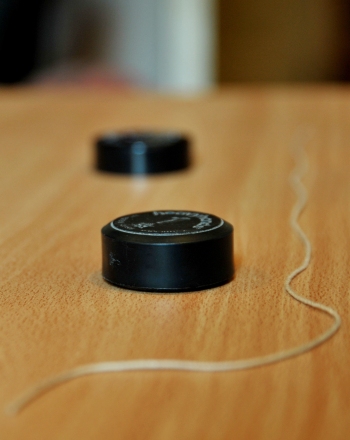Descripción

The final shot in the pool game is yours, but the cue and the eight ball aren’t nicely lined up with any of the pockets. Looking around, the closest pocket is 45 degrees off the line between the two balls. You take aim for a glancing blow, the cue ball strikes the eight ball…what happens next? Do you sink the eight ball? Which way does the cue ball end up going? And how can you make the eight ball go off in a different direction?Pool is a great example of physics in action. After every collision, the momentum of all the balls—the product of their mass and velocity—has to be conserved. That is, the total momentum before the collision has to be the same as the total momentum after the collision. And, roughly speaking, the energy must be conserved as well; the balls can’t fling away from each other with more energy than you give them. These two laws—the conservation of energy and the conservation of momentum—work together to steer the balls around the table.In this project, you’ll experiment with colliding masses, see how they collide, and maybe learn how to use physics to plan the perfect pool shot!
It is an educational content by education.com.
By clicking on the title of this resource, you will be redirected to the content. If you want to download the project, you just have to join the website, which now is for FREE.
Authors
Author Christopher Crockett
Categories 14-16 años, Ficha para imprimir, Experimento/Práctica, Matemáticas, Science Fair - Education, Inglés add
Tags add
Publication date 27 / 08 / 2020
License The original license is kept.
Do you want to comment? Sign in





Comments
mode_comment0